Beautiful stately homes hiding dark secrets
Grand estates with sinister pasts

Worthy of several Game of Thrones plotlines and then some, these heritage homes have seen everything from murders and executions to arson attacks and witch trials, plus more than a few sinister spectral residents.
We uncover the past of some of the world's most beautiful stately homes and reveal the skeletons lurking in their closets.
Click or scroll to tour the homes if you dare...
Morris-Jumel Mansion, New York, USA
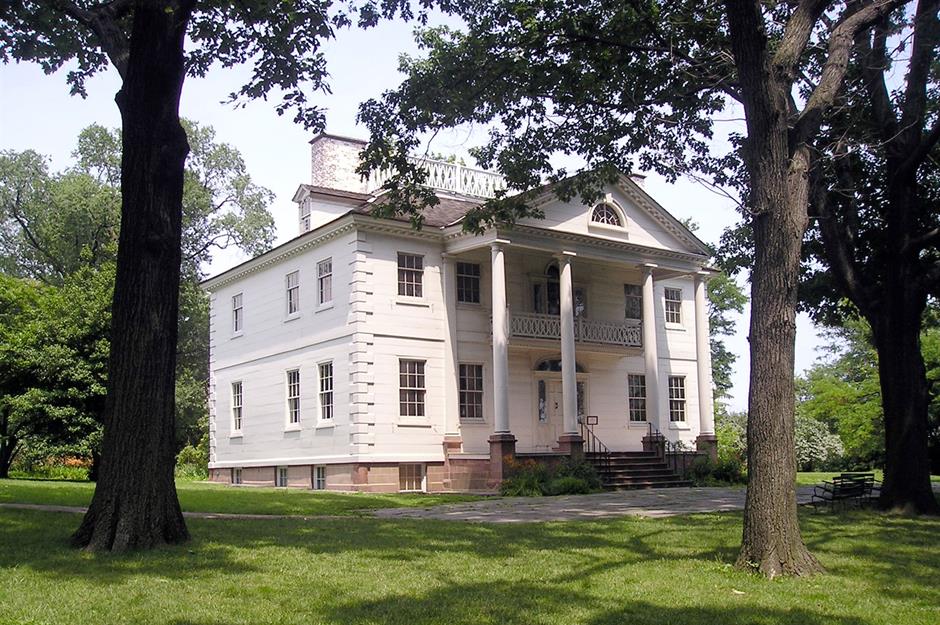
The Morris-Jumel Mansion is one of Manhattan's most venerable surviving houses. Built in 1765, the building served as George Washington's HQ for a time during the American Revolution.
The amazing American estate was acquired in 1810 by French-Haitian merchant Stephen Jumel, who set up home there with his wife, Eliza.
When her husband died at the mansion in 1832, her marriage to ex-vice president Aaron Burr in the months following Stephen's death created something of a stir.
Morris-Jumel Mansion, New York, USA
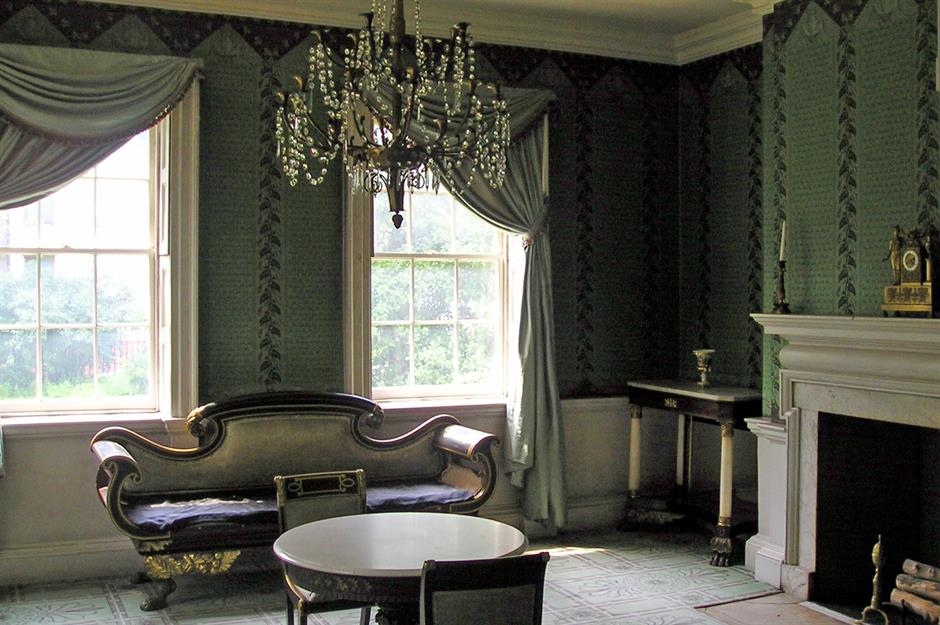
Now a museum, the mansion is said to be one of the most haunted places in New York. A former curator has claimed to have heard the groans of Stephen Jumel, while a group of boisterous school children said they were told to shut up by Eliza's spectre.
A phantom revolutionary soldier has purportedly been sighted marching in the grounds, as well as the spectre of a serving maid and the likeness of Aaron Burr.
Edinburgh Castle, Edinburgh, UK

Sitting atop an extinct volcano, Edinburgh Castle towers over the Scottish capital, protected by grand, fortified walls. But the historic fortress, which dates from the 12th century, has a macabre past.
It was the scene of the Black Dinner, an infamous event that inspired one of the most shocking Game of Thrones moments, the Red Wedding.
In November 1440, 16-year-old noble William Douglas, 6th Earl of Douglas, and his younger brother David received an invitation they couldn't refuse: dinner at the castle with King James II, a boy of 10 at the time.
Edinburgh Castle, Edinburgh, UK
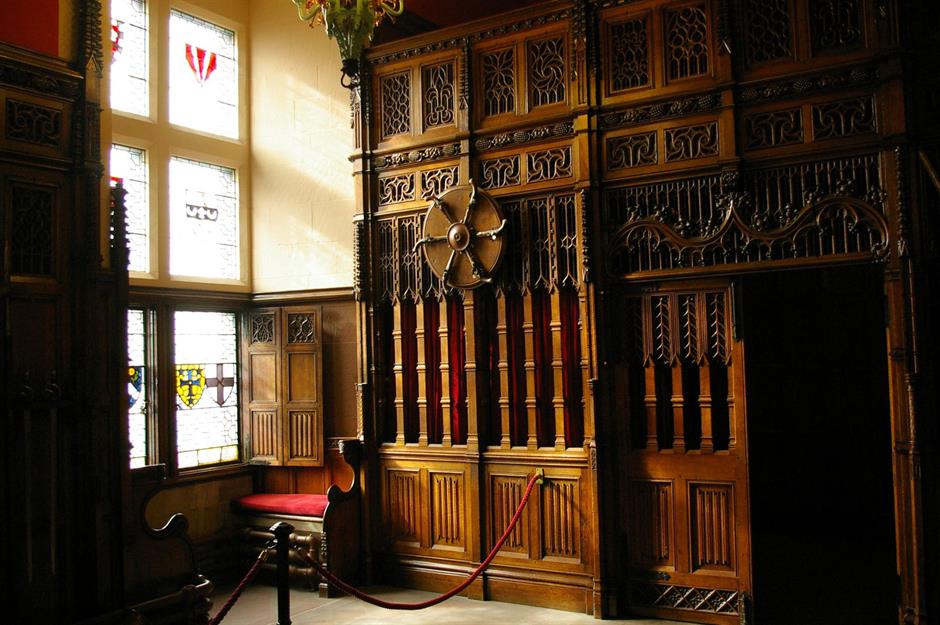
The soirée was organised by the Lord Chancellor Sir William Crichton, who feared the Douglas Clan was becoming too powerful and could pose a threat to the young monarch.
The feast took place in the castle's Great Hall, and according to some historians, just as the dinner was coming to an end, a black bull's head, a symbol of death, was brought in and placed in front of the Earl.
Much to their horror, the Douglas boys were dragged out of the castle, subjected to a mock trial and beheaded.
Samlesbury Hall, Lancashire, UK
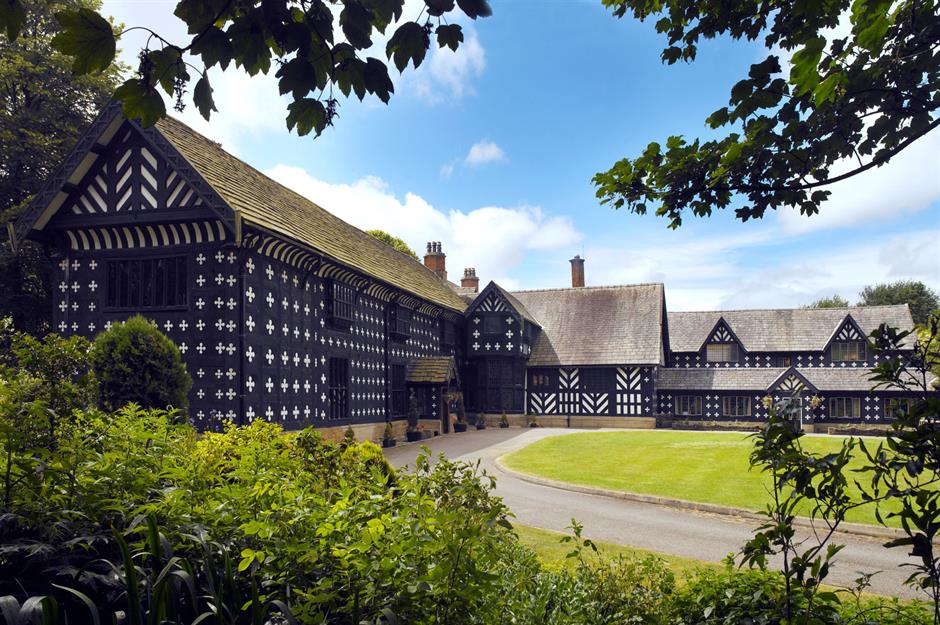
Almost 700 years old, Lancashire's Samlesbury Hall, which was the seat of the staunchly Catholic Southworth family for centuries, has a history peppered with tragedy and ghoulish goings-on.
Jane Southworth, who married into the clan in 1598, was accused of witchcraft and forced to undergo a degrading trial to prove her innocence. Thankfully, she was acquitted and spared a death sentence.
Then, in the 17th century, Dorothy Southworth fell in love with a Protestant neighbour. The couple met in secret and decided to elope, but on the night of their planned escape, Dorothy's lover and two of his friends were killed by her brother.
Samlesbury Hall, Lancashire, UK
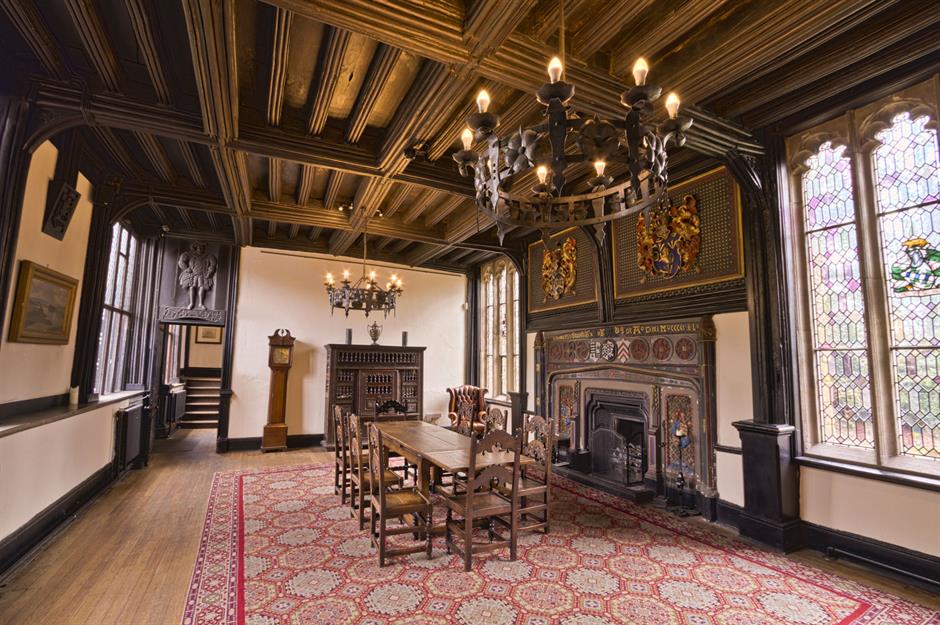
Bereft, Dorothy was sent to a convent abroad where her mental health deteriorated before she eventually died. Her ghost, the so-called White Lady, is said to roam the house.
The impressive stately home passed to the Harrison family in the 19th century, headed up by Patriarch Joseph Harrison. Joseph's son William allegedly took his life in the house in 1879 following a painful accident.
His phantom may be behind other paranormal phenomena that have been reported in the house, which include room bells ringing on their own.
Monte Cristo Homestead, New South Wales, Australia
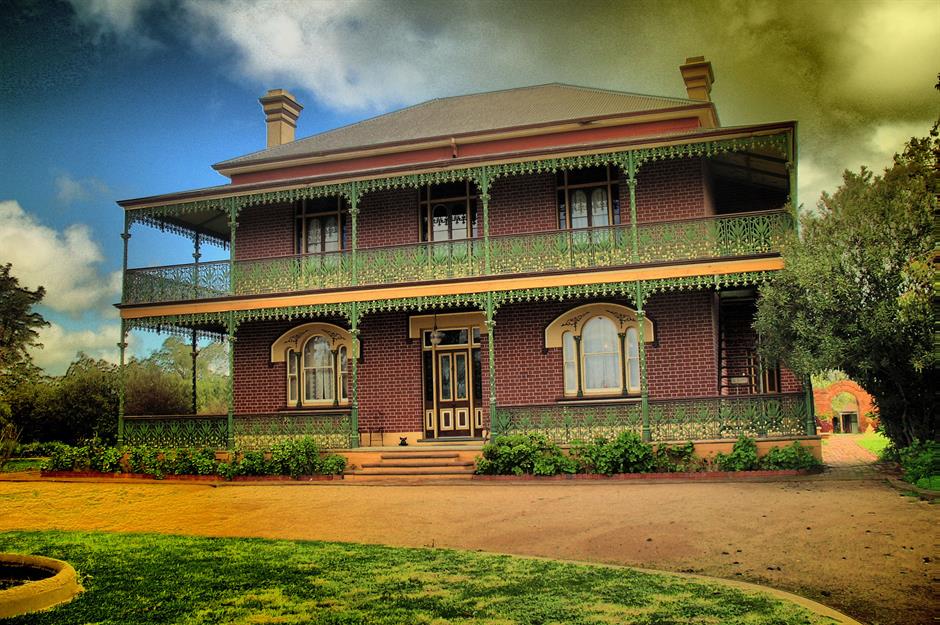
The Monte Cristo Homestead in Junee, New South Wales, has been dubbed the most haunted home in Australia.
A hotbed of paranormal activity, the property was built in 1885 by local pioneer Christopher William Crawley and belonged to the Crawley family until 1948.
The historic house lay empty until 1963, when it was snapped up by Reg and Olive Ryan, who restored it to its former glory. The Ryans have reported everything from ghostly hands touching their shoulders and lights randomly switching on to hearing the sound of phantom footsteps.
Monte Cristo Homestead, New South Wales, Australia
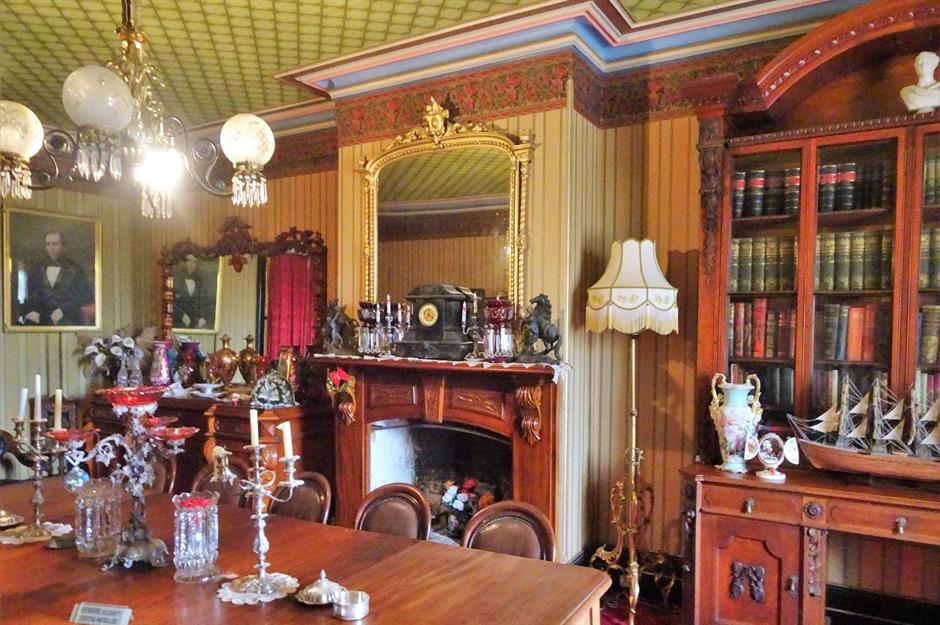
A total of 10 spirits are thought to haunt the house. The paranormal activity comes as no surprise given the homestead's spooky history, which is marked by several harrowing incidents.
Sometime during the late 19th century, a maid who was pregnant with Mr Crawley's baby, purportedly threw herself off the second-floor balcony.
A young child was pushed down the stairs not long after, and a stable boy was burned alive in a horrific arson attack. Adding to the homestead's dark history, the then-caretaker was reportedly shot dead on the property in the early 1960s.
Chateau de Brissac, Maine-et-Loire, France
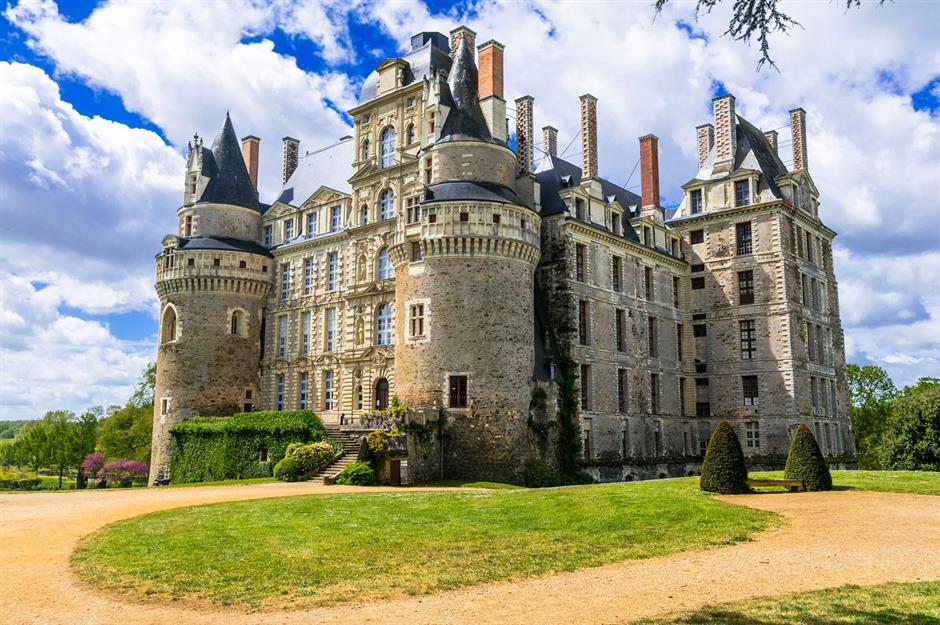
Nicknamed the giant of the Loire Valley, the towering Château de Brissac is the tallest château in France. Built over seven floors, the 204-room castle was constructed for the Counts of Anjou in the 11th century and was acquired by René de Cossé, the first Lord of Brissac, in the 1500s.
The château was ransacked during the French Revolution and later restored by the Cossé-Brissac family in the 19th century. It has a chequered history and its very own ghost, La Dame Verte or the Green Lady.
Chateau de Brissac, Maine-et-Loire, France
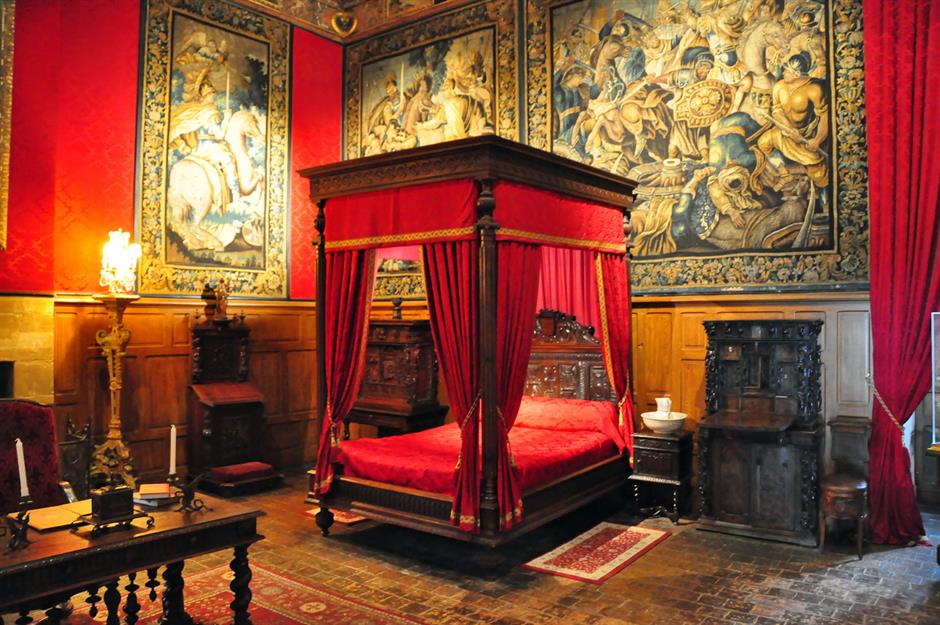
The phantom is said to be the spirit of Charlotte de Brézé, an illegitimate daughter of King Charles VII, who married nobleman Jacques de Brézé in 1462. Their marriage was unhappy and, some years later, rumours swirled that Charlotte was having an affair.
One night in May 1477, Jacques is said to have killed Charlotte and her lover. According to legend, the Green Lady has ghastly hollows where her eyes should be and roams the chateau wailing.
Berkeley Castle, Gloucestershire, UK
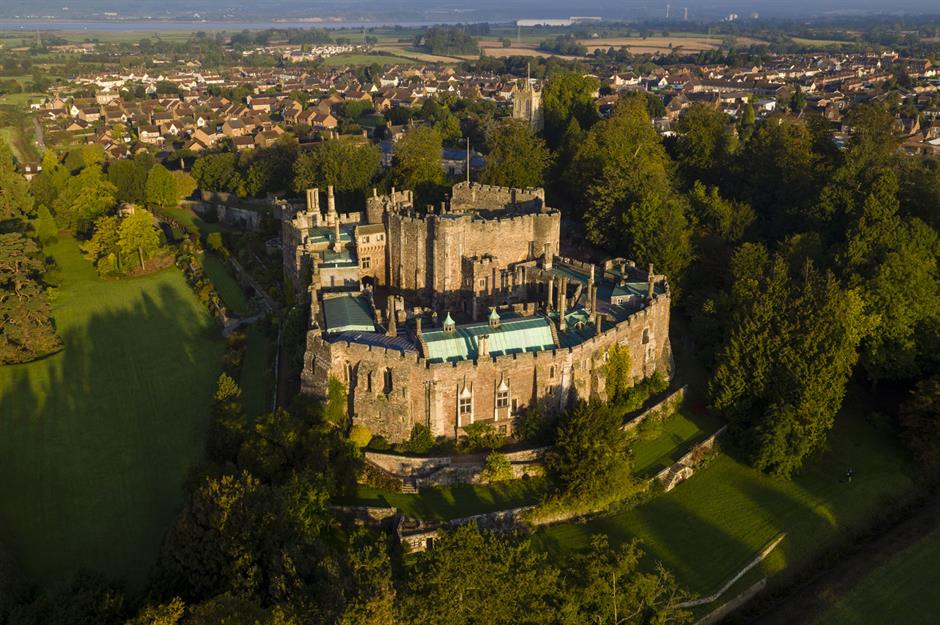
During his disastrous reign, King Edward II feuded with the aristocracy, who strongly disapproved of his close relationships with favourites, including Piers Gaveston.
Whether Edward II and Gaveston were an item is open to question, but the king spoiled him with titles, land, and jewels. The duo were said to be virtually inseparable, and rumours of an intimate relationship were common.
Edward II was eventually deposed by his wife, rebel Queen Isabella. The king was forced to abdicate in January 1327 and imprisoned in Gloucestershire's Berkeley Castle.
Berkeley Castle, Gloucestershire, UK

According to local lore, Edward II was held in this cell and executed on the night of 21 September 1327 with the assistance of a red-hot poker.
The story goes that his screams were heard for miles around. Most historians have dismissed the account as homophobic propaganda, but the deposed king is still thought by many to have been murdered at the castle.
Some experts, however, believe he escaped and fled to Italy.
Biltmore, North Carolina, USA
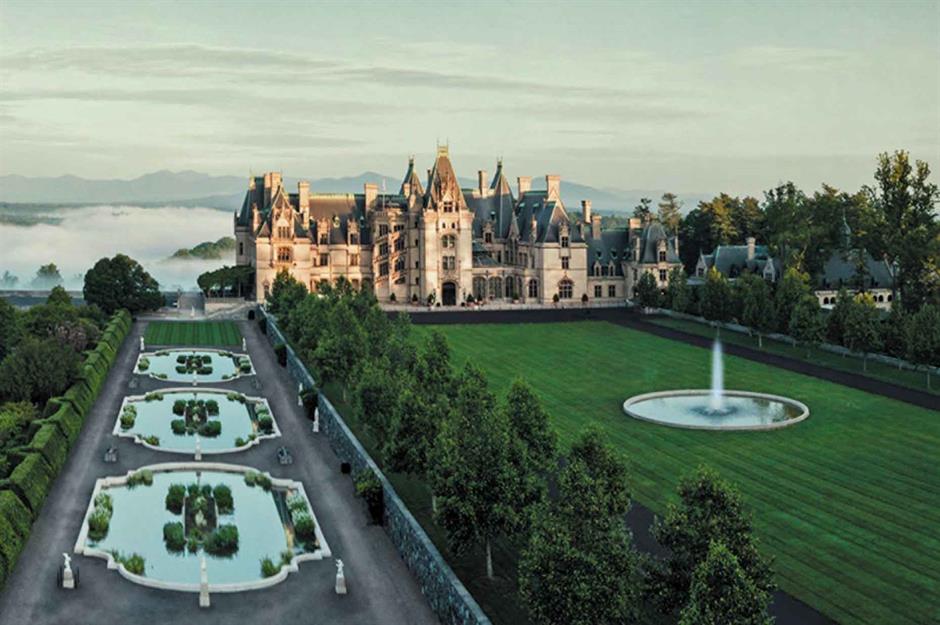
The grandest and largest privately owned home in America, Biltmore was built for George Washington Vanderbilt II, patriarch of one of the world's most famous families, in the late 19th century.
The colossal Gilded Age mansion sprawls over 178,926 square feet (16,623sqm) and has a storied history, some of which is pretty weird to say the least.
After George died in 1914, his widow, Edith, would spend most of her time in the library at Biltmore. Servants noticed she was speaking out loud to her deceased husband for hours on end.
Biltmore, North Carolina, USA

These daily conversations continued for quite some time, and legend has it, they could even be heard following Edith's death. But the home is the scene of another curious story.
In 1925, inspired by an avant-garde Russian cabaret troupe called La Chauve-Souris, which translates as 'the bat', George and Edith's eccentric daughter Cornelia commissioned ghostly murals to be painted on the basement walls.
Aptly named the Halloween Room, witches, bats, and black cats can be seen in the eerie underground space to this day.
Muncaster Castle, Cumbria, UK
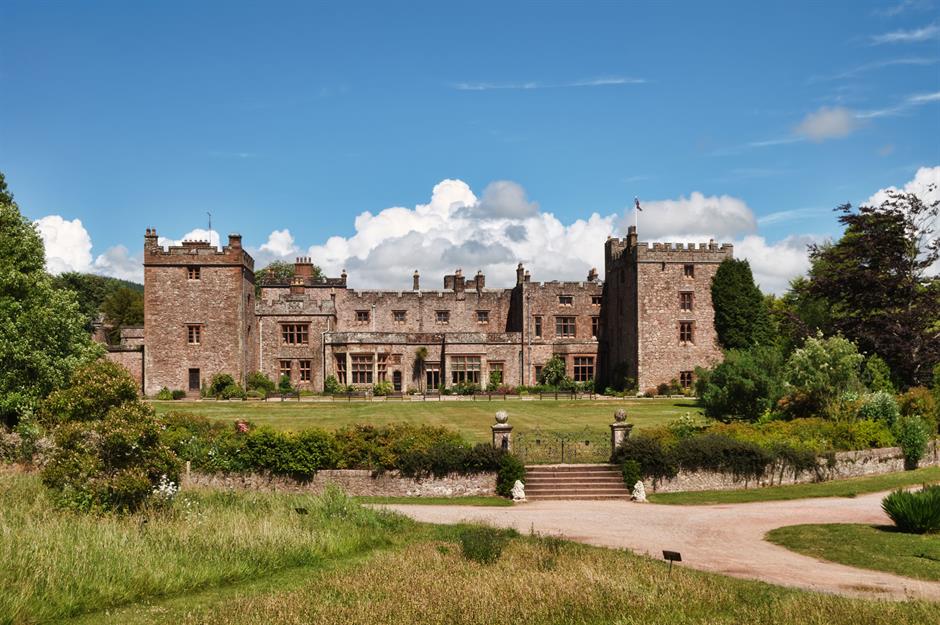
Muncaster Castle near Ravenglass in Cumbria has been the seat of the Pennington family for more than 800 years. The enchanting stately home is teeming with ghosts if the many reports of sightings are to be believed.
They include the phantom of murderous jester Tom Skelton, believed to be the original Tom Fool. Recorded in an 1825 compilation of tales and essays, Skelton was said to have had a devilish sense of humour.
Muncaster Castle, Cumbria, UK
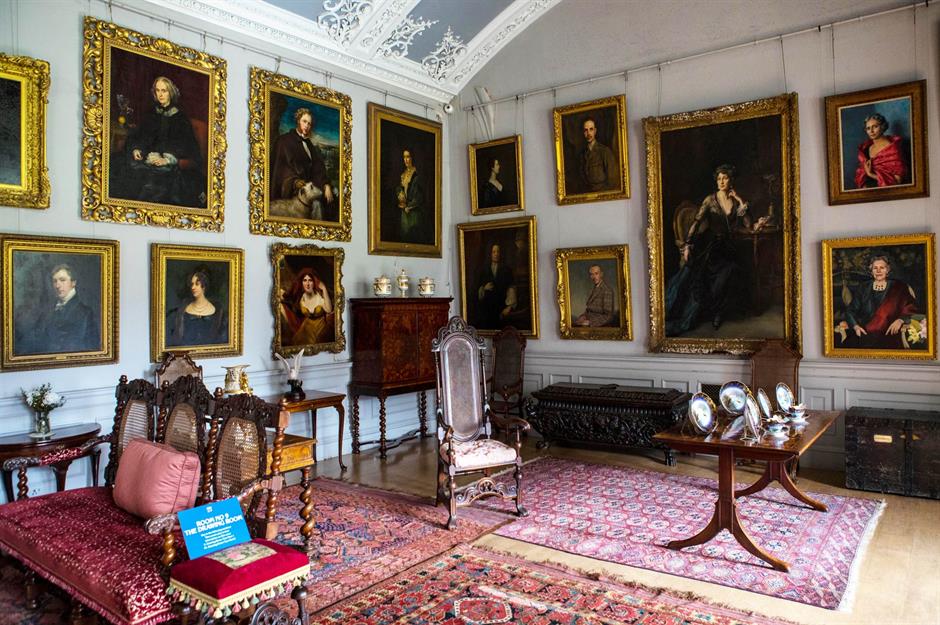
Hired by the Penningtons in the late 16th century, he was partial to playing deadly practical jokes. It is said he used to sit under a chestnut tree in the castle grounds, offering directions to passing travellers.
Those he didn't like the look of were directed to a perilous patch of quicksand where some no doubt met their end.
Casa Loma, Toronto, Canada
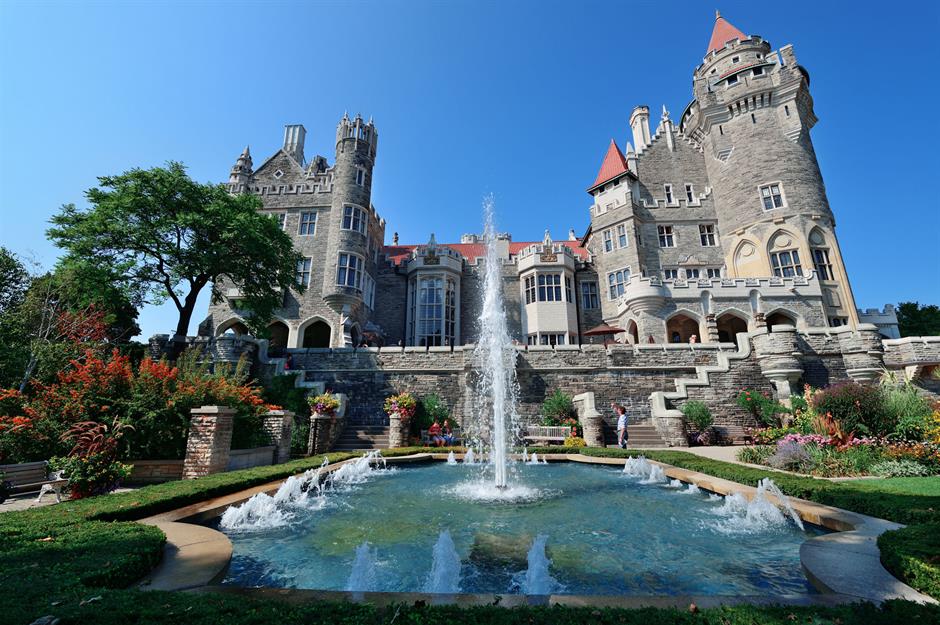
Upon its completion in 1914, Toronto's Casa Loma was the largest private residence in Canada with a total of 98 rooms covering 64,700 square feet (6011sqm)
The mansion has all the trappings of an elite stately home, including showy staterooms and royalty-worthy guest suites. Built for financier Henry Pellatt, it turned out to be something of a curse and contributed to his ruin.
Not long after the amazing Canadian mansion was finished, Pellatt's financial fortunes took a turn for the worse. His luck dried up, and many of his investments failed.
Casa Loma, Toronto, Canada
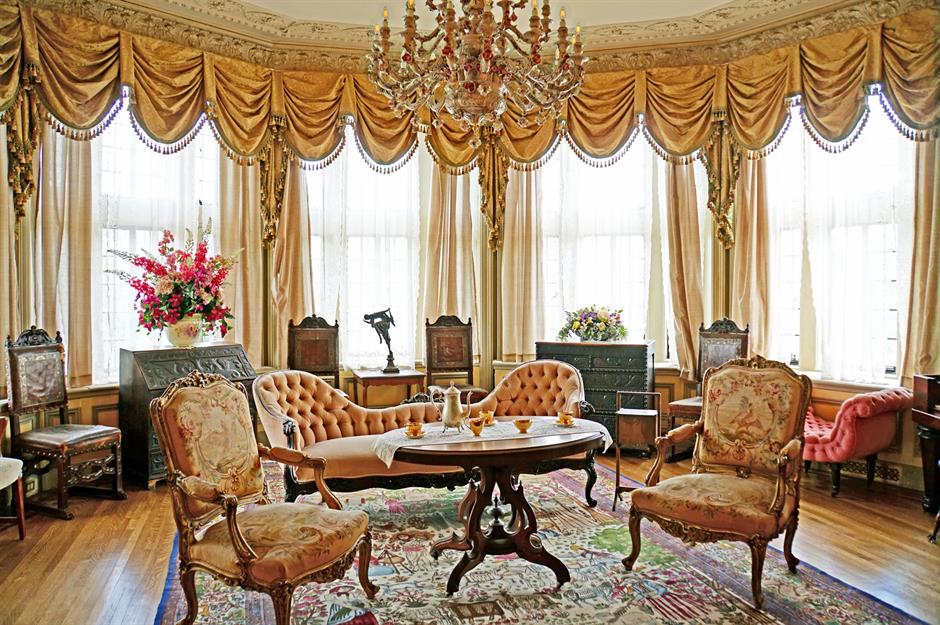
Pellatt and his wife were driven to near-bankruptcy and forced to let go of their beloved Casa Loma in 1924. Their ghosts allegedly haunt the house, which isn't surprising given the couple's reluctance to leave.
Another ghost said to reside at the property has been labelled the White Lady. Thought to be the ethereal phantom of an ill-fated maid who worked at the house in the early 1900s, she has been seen by several guests and members of staff sauntering through the corridors and rooms.
Glamis Castle, Angus, UK
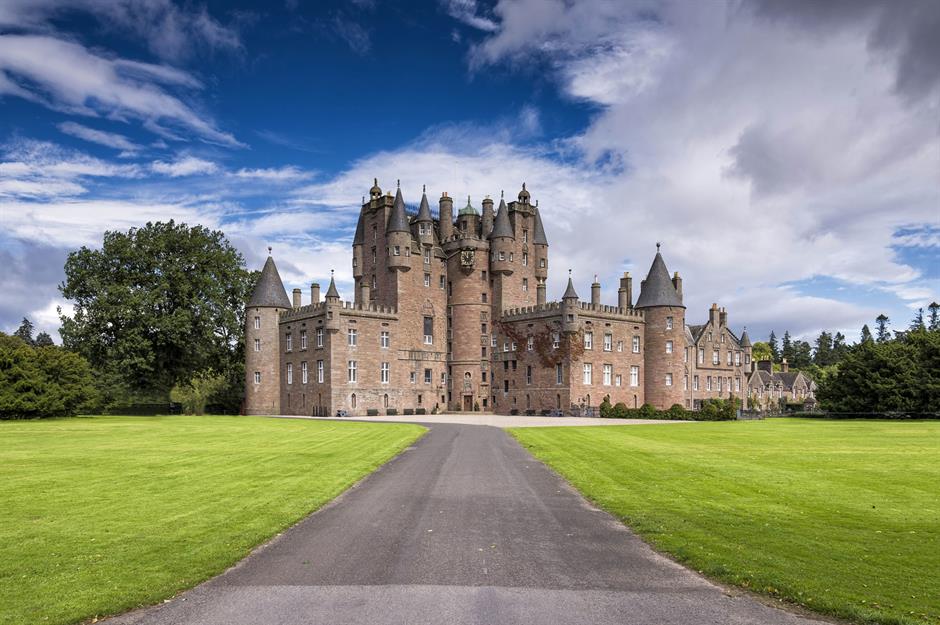
Steeped in history, Glamis Castle in Angus, Scotland, dates to the 11th century and features in Shakespeare's Macbeth as the residence of the eponymous character.
The ancestral home of the Earls of Strathmore and Kinghorne (the Lyon family), the castle was extensively restored in the late 17th century. A house with a strong connection to the British royal family, Glamis was the childhood home of the Queen Mother, who was a Bowes-Lyon, and the birthplace of her daughter, Princess Margaret.
Several dark legends are associated with the castle. The best-known is the Monster of Glamis...
Glamis Castle, Angus, UK
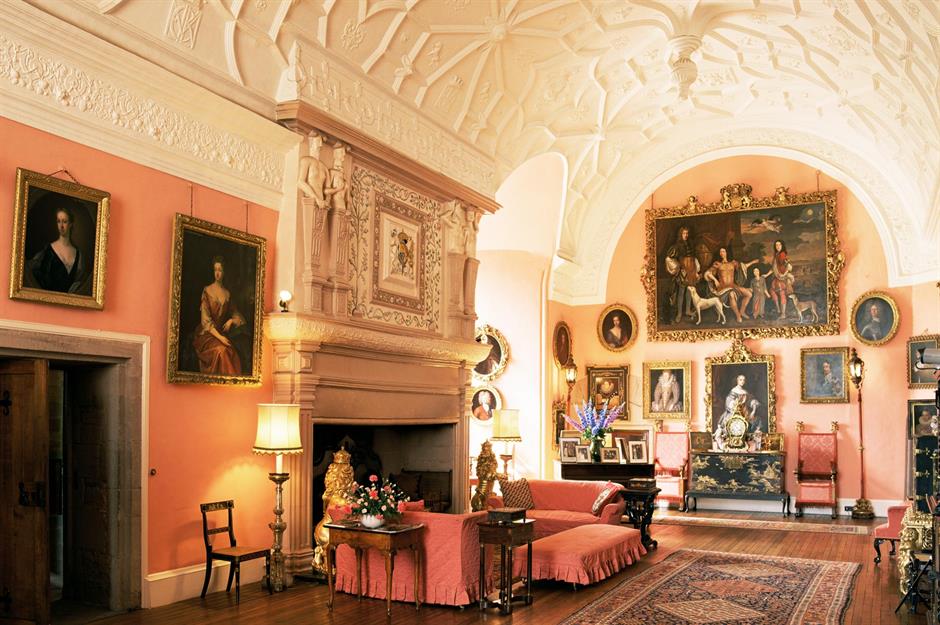
Sadly, the monster was simply a child with a physical disfigurement who was supposedly born into the Lyon family and cruelly locked away in a secret chamber.
According to a 1908 publication by Oxford University Press, the story goes that the secret was only to be known by the Earl of Strathmore, his heir-apparent and the estate manager.
Other legends include the story of the 15th-century Earl Beardie, who gambled and cursed on the Sabbath. According to the story, the devil appeared and, upon beating the Earl at cards, condemned him to play for all eternity.
Greystone Mansion, California, USA
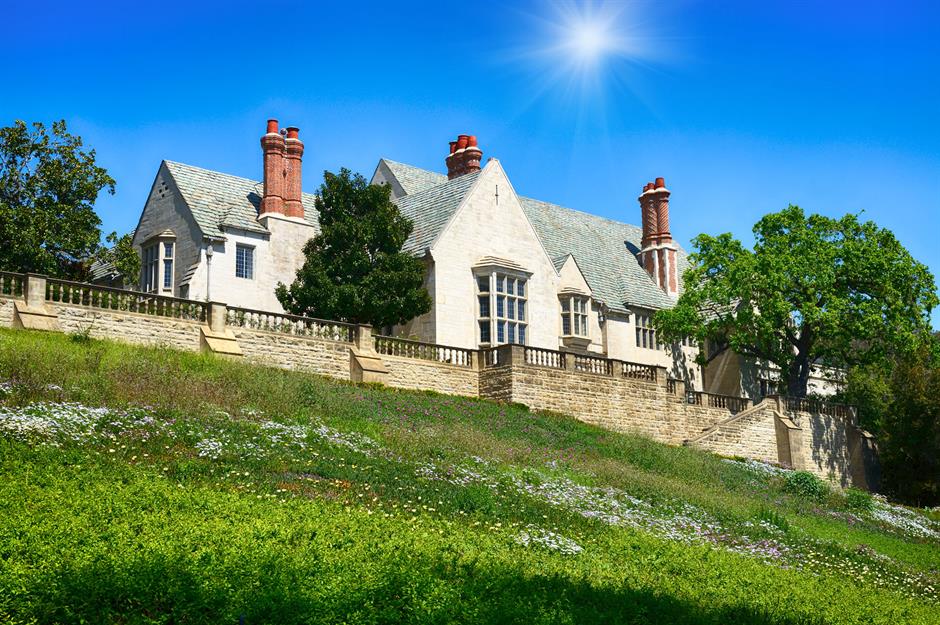
Completed in 1928, Greystone Mansion in Beverly Hills was thought to have been the most expensive home built in California at the time.
A year after the construction of the 55-room Tudor Revival mansion, a horrific crime took place in one of the guest bedrooms. The owner of the house, Ned Doheny, and his long-time assistant and friend, Hugh Plunkett, were found dead from gunshot wounds.
Rumours swirled that the killings were a murder-suicide, with some historians suggesting their deaths were related to the two men's upcoming testimonies at Ned's father's federal fraud trial. To this day, the tragic events remain a mystery.
Greystone Mansion, California, USA
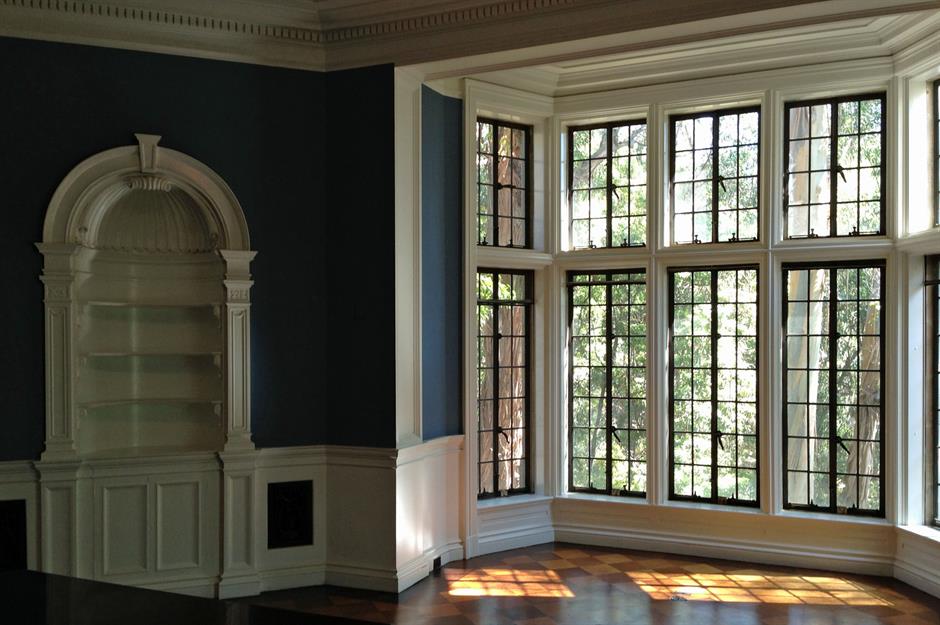
Several ghost sightings have been reported at Greystone Mansion.
These range from a sombre man wearing a black suit to the phantom of Lucy Doheny, Ned's widow.
Now an in-demand location for TV and film, scores of shows have been shot at the famous movie home, including Gilmore Girls, Murder, She Wrote, The Big Lebowski, and X-Men.
Burg Eltz, Rhineland-Palatinate, Germany
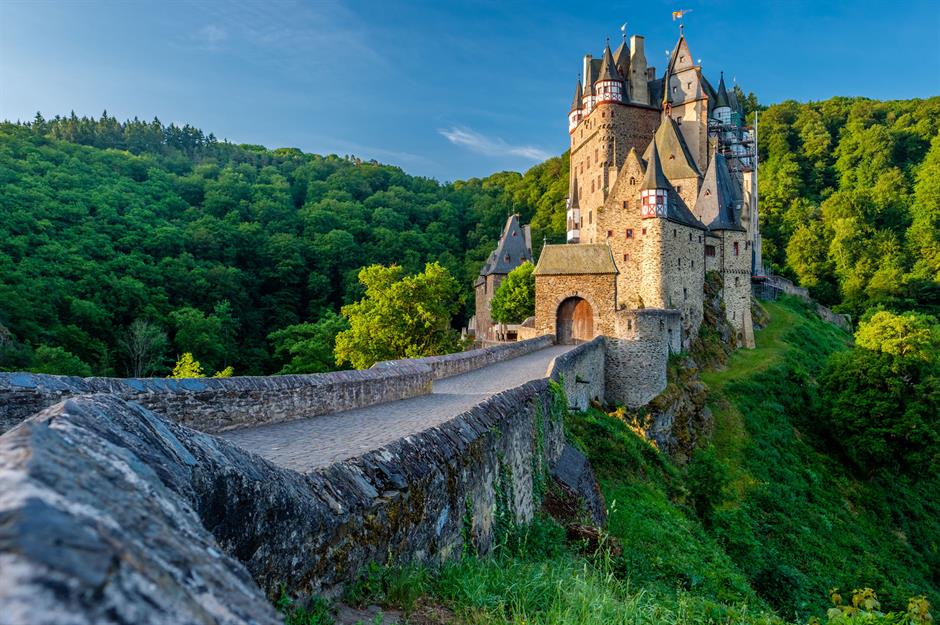
A beguiling fairy tale castle, Burg Eltz in the west of Germany dates from the 12th century and has remained in the Eltz family for an impressive 33 generations.
The wonderfully romantic castle, which sits above the Elzbach River, is iconic in Germany and was featured on the 500 Deutsche Mark note from 1965 to 1992.
The most famous ghost of the castle is the phantom of Countess Agnes. Legend has it that she was promised in marriage to the Knight of Braunsberg, but during a feast to celebrate the match, she rebuffed her suitor, publicly humiliating him.
Burg Eltz, Rhineland-Palatinate, Germany: Beautiful stately homes hiding dark secrets
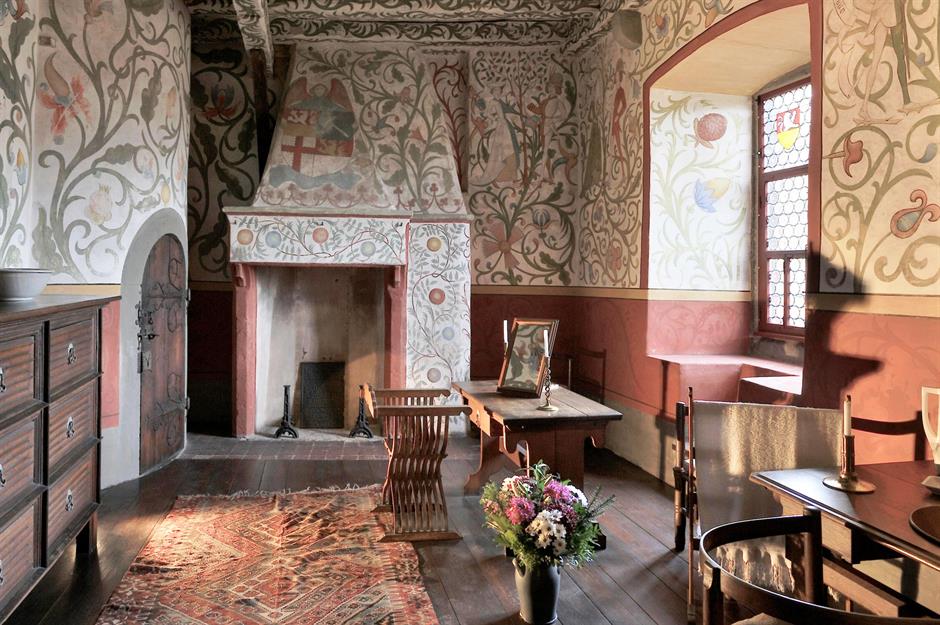
Enraged by the rejection, the spurned knight organised an attack on the castle. Countess Agnes's father and brothers were away from the castle, but Agnes donned armour and a sword and began fighting off the intruders.
After a valiant fight, she was struck and fatally injured. Upon lifting the visor, Burg Eltz's valiant defender was revealed to be none other than Countess Agnes. Her ghost is said to haunt this bedchamber in the castle.
Loved this? Now discover more incredible homes with fascinating pasts
Comments
Be the first to comment
Do you want to comment on this article? You need to be signed in for this feature